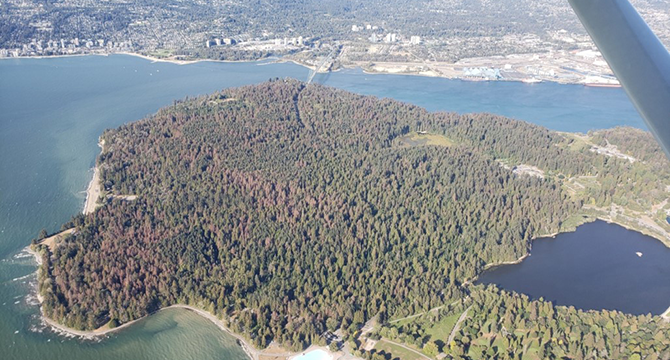

About the moth
The hemlock looper moth is an endemic insect that experiences population outbreaks approximately every 15 years.
Its larvae hatch in the spring and aggressively feed on foliage, causing the most damage between July and October.
It feeds on coastal coniferous species which makes Stanley Park particularly vulnerable.
Hemlock looper moth outbreak
In 2020, Stanley Park experienced a hemlock looper External website, opens in new tab outbreak.
Though 160,000 of these trees were affected — including western hemlock, Douglas fir, and grand fir — only a fraction of these trees are a risk to public safety and will need to be cut-down.
As part of our progress in all phases, approximately 11,000 trees have been removed. In addition, over 50,000 new seedlings of diverse species have been planted through a 3-year donation from Western Forest Products External website, opens in new tab. A total of 58% of Stanley Park’s forested areas have now been treated.
This outbreak also affects parts of West and North Vancouver, where many trees are dying.
After recent droughts and hard winters, trees in Stanley Park were more vulnerable to the looper outbreak and less likely to recover.
What's happeningPhase 3 advanced work for hemlock looper response is complete
The planting and restoration work is now complete.
Meadow Trail, Thompson Trail, and the section of Bridle Path that had been closed off previously are now all currently open and accessible to the public.
No further traffic impacts are expected along Stanley Park Drive or North Lagoon Drive
Managing the hemlock looper outbreak and wildfire risks
Hemlock looper populations usually decrease when the weather interrupts their life stages and when predators such as parasitic wasps and birds eat them.
Using pesticides is not an option because they harm other, non-target insects like butterflies that live in the forest ecosystem.
We're addressing the outbreak and wildfire risks with support from a forestry consultant. Their expert report PDF file (4 MB) outlines a careful approach, focusing on risk mitigation and ecological enhancements for long-term forest health.
